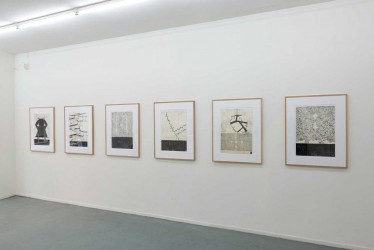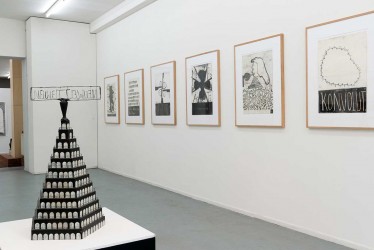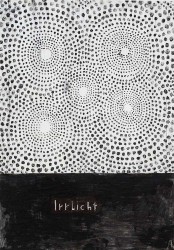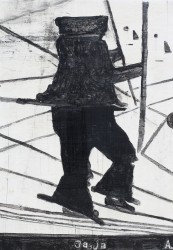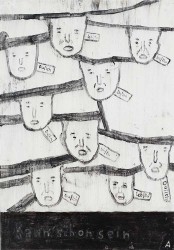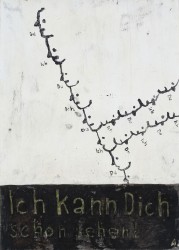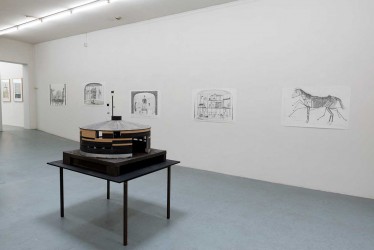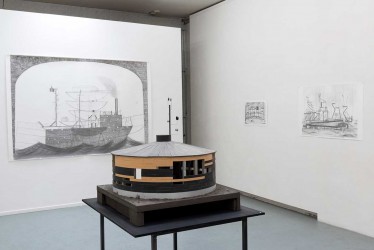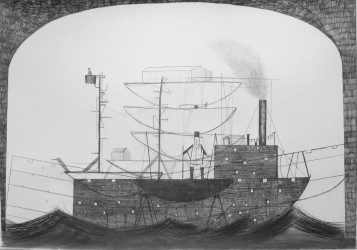Martin Assig, Dirk Zoete
drawings, work on paper, three dimensional work
13 May – 10 June 2012
Martin Assig’s (1959) new drawings are made with ink on paper and are subsequently covered with a layer of transparent wax that, as it were, fixes and freezes the lines of the drawing. Faces, circles and swirls are linked. In other drawings bodies are surrounded by halo of beams. They often stand on a pedestal on which a text is written, similar to votive statues that are donated in gratitude for healed limbs or organs. Martin Assig thus thematizes the subjects from his earlier smaller drawings by reproducing them on a larger scale and placing them on a pedestal. Text and image both mainly concentrate on the basics of human existence; how does man relate to ‘the other’ and to the world as a whole. One of the captions says: Ich kann Dich schon sehen (I can already see you). It shows a series of linked faces in profile which are subsequently described as Ich (I), and the next as Du (You). Martin Assig also shows a three-dimensional work: Die Ordnung (Order), a five sided variation on the Tower of Babel, rising eleven stories high, with white windows and round, black arches. In thin iron wire the word NEUWELT (New World) is written on the tower’s spire; a fragile annunciation of an utopian, new world.
In his drawings, Dirk Zoete (1969) shows theatrical stages with buildings or ships on them. These constructions contain several floors upon which houses, objects and people have been placed, that seem to be part of a system. The human figures are depicted in a rudimentary manner, like dolls or large scarecrows, looking at the world from an observation post. The architectural inventions and Ark-like ships appear to be gargantuan, but are at the same time endearingly reduced in size by the theatre-like setting. Sometimes the stage setting is explicit, as in The Wild Bunch in which cowboys are placed on wooden horses against an American desert landscape backdrop. The system of houses, paddle wheels, barns, people and animals that can be seen in most works, points to a desire for a simple, coherent world in which man is self-sufficient. Dirk Zoete also elaborated on this theme in a scale-model of a circular house that simultaneously serves as studio, home and farm; the ideal place for an artist to live an autarkical life.
